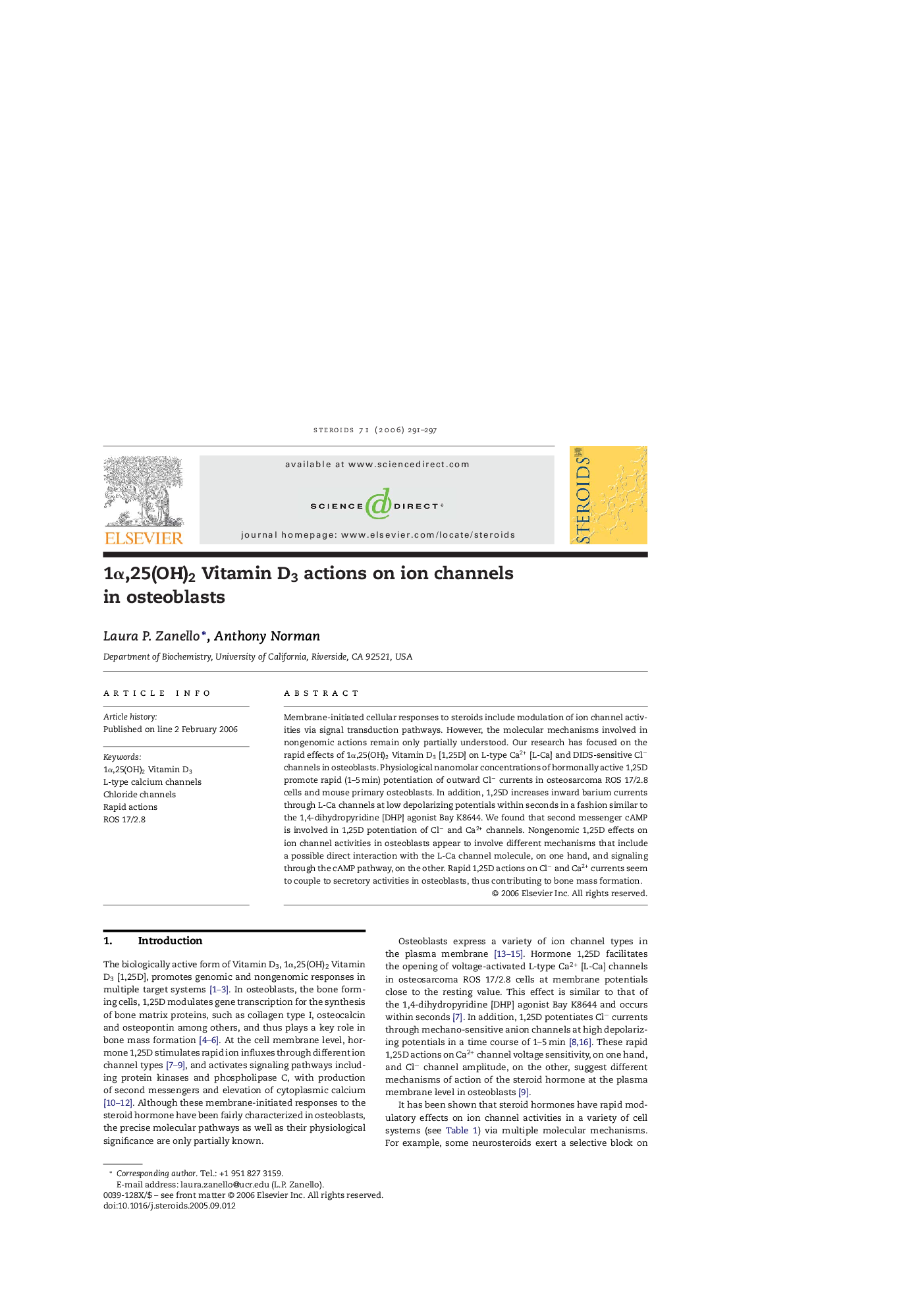| Article ID | Journal | Published Year | Pages | File Type |
|---|---|---|---|---|
| 2029054 | Steroids | 2006 | 7 Pages |
Abstract
Membrane-initiated cellular responses to steroids include modulation of ion channel activities via signal transduction pathways. However, the molecular mechanisms involved in nongenomic actions remain only partially understood. Our research has focused on the rapid effects of 1α,25(OH)2 Vitamin D3 [1,25D] on L-type Ca2+ [L-Ca] and DIDS-sensitive Clâ channels in osteoblasts. Physiological nanomolar concentrations of hormonally active 1,25D promote rapid (1-5 min) potentiation of outward Clâ currents in osteosarcoma ROS 17/2.8 cells and mouse primary osteoblasts. In addition, 1,25D increases inward barium currents through L-Ca channels at low depolarizing potentials within seconds in a fashion similar to the 1,4-dihydropyridine [DHP] agonist Bay K8644. We found that second messenger cAMP is involved in 1,25D potentiation of Clâ and Ca2+ channels. Nongenomic 1,25D effects on ion channel activities in osteoblasts appear to involve different mechanisms that include a possible direct interaction with the L-Ca channel molecule, on one hand, and signaling through the cAMP pathway, on the other. Rapid 1,25D actions on Clâ and Ca2+ currents seem to couple to secretory activities in osteoblasts, thus contributing to bone mass formation.
Related Topics
Life Sciences
Biochemistry, Genetics and Molecular Biology
Biochemistry
Authors
Laura P. Zanello, Anthony Norman,
